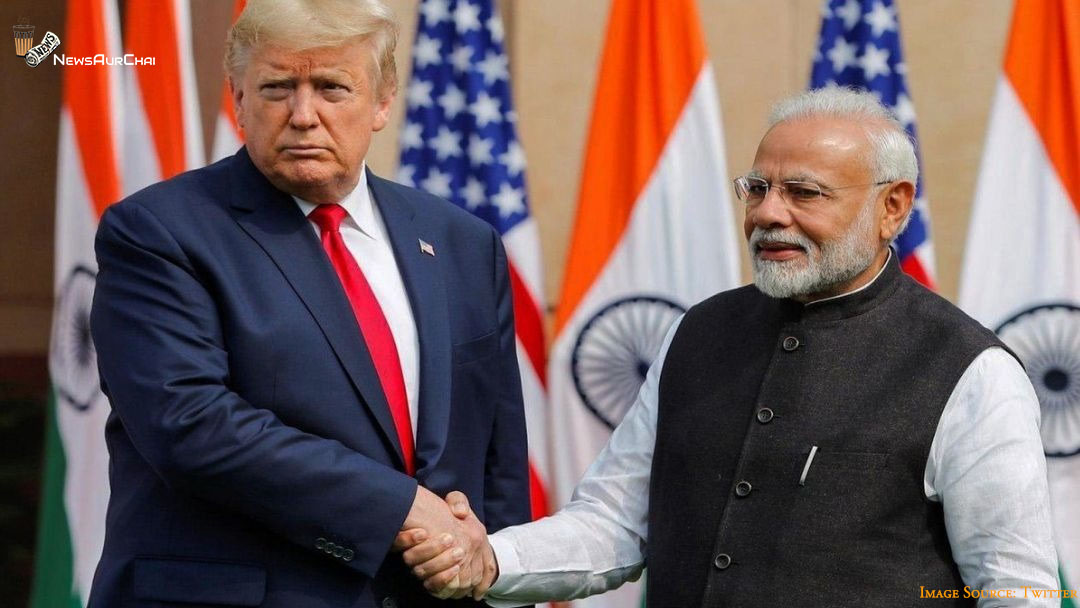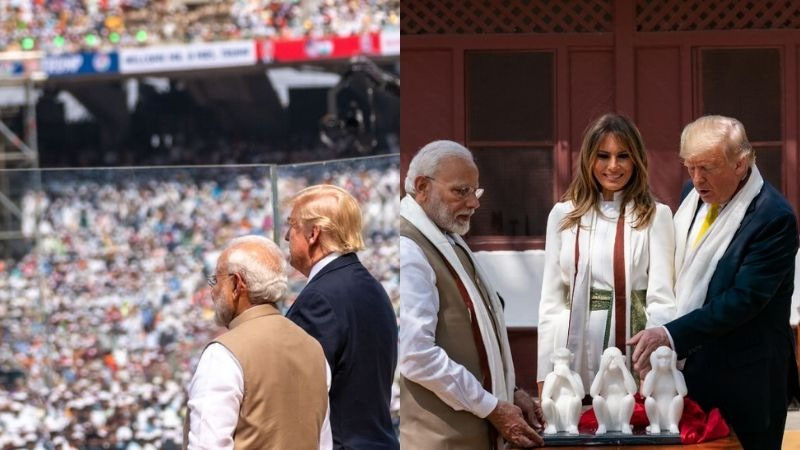Known and Unknown Impact of Trump’s Visit To India

US President Donald Trump had estimated the number of people attending his welcoming ceremony in India to be 10 million. Though his expectations were not accurately met, the President’s first state visit to India was a grand and lavish affair.
This visit’s optics were of high importance to both the nations— Trump wanted to showcase his popularity abroad to the people of America and his capability to negotiate substantial trade deals with India, the “king of tariffs”.
On the other hand, PM Modi was aiming at creating some positive headlines as he has been in the negative limelight since the revoking of Article 370 and the ongoing protests against the controversial Citizenship Amendment Act (CAA).
Although both the parties did not agree much on a trade deal, they had a few diplomatic takeaways.
The first day of his visit, that is February 24, encompassed a great deal of optics—major rally event at Ahmedabad, Trump’s addressing of 100,000 people at the Motera Cricket Stadium, Gujarat, talking about Bollywood, DDLJ, cricket, Sachin Tendulkar, Virat Kohli, and saints like Swami Vivekananda.
The city of Agra has been decked up with large billboards showcasing welcome messages for President Trump; street roundabouts adorned with Indian and American national flags.
PM Modi said in his speech at Motera Stadium, “India-US relations are no longer just another partnership. It is a far greater and closer relationship. I am happy that under President Trump’s leadership, the bilateral relationship between the two countries has strengthened. The visit is a new chapter in the bilateral relationship.”
Tanvi Madan, a senior fellow in the Foreign Policy program at the Brookings Institution, believes that a trade deal between the countries would have been tough taking into consideration the bitter tariff dispute ensuing since last year. However, the visit is significant as Delhi was losing bipartisan support in America and would push India down the trade hit list of administration of Trump while the negotiations continue. She also said that the signing of nuclear deals every time obviously cannot be expected.

Nevertheless, significant deals took place in the areas of military and defence. India will purchase 24 attack helicopters for the Indian Navy and other military equipment worth 3 billion dollars from the US.
Another deal signed with Exxon Mobil will result in India buying more Liquefied Natural Gas (LNG) from America. This would satisfy India’s growing need for energy security and diversification of its petroleum import portfolio. The deals, however, would not hamper India’s pact with Russia which supplies a majority of India’s military equipment.
Both India and America share a similar concern regarding China and Chinese tech giant Huawei’s 5G technology, thereby bringing the two nations closer due to converging interests.
Delhi Violence and Trump’s Visit:
Police say that the violence that ensued in north-east Delhi was a side-effect of the President’s visit. However, Trump refrained from commenting upon the ongoing protests and religious intolerance. He even complimented Modi’s efforts in handing out religious freedom to all communities of India. He also said that it was “up to India” to handle the situation.
BJP leader Kapil Mishra reportedly threatened the anti-CAA protestors that they would be forcibly evicted after Trump left the country. The communal strife that took place about 10 miles away from Trump and Modi’s meeting, was the worst ever experienced in recent years in Delhi, causing casualties of both Hindus and Muslims.
On February 27, the US State Department issued a mild response to the riots, asking “all parties to maintain peace, refrain from violence, and respect the right of freedom of assembly.”
Clean Capital – Delhi
Before Trump’s arrival, India plunged into a cleanliness drive. As the President scheduled his visit to the Taj Mahal, the entire premises of the monument was cleaned. The polluted, stagnant waters of the Yamuna were cleaned by releasing an additional 17 million litres of water. The walls, fountains, and tombs covered mud-packed were scrubbed and cleaned.
Agra, considered to be one of the dirtiest tourist destinations, underwent a rapid, complete makeover before the visit. The water-logging in the street was checked, plastic waste near the Taj was cleaned, pollution was checked, walls, electric poles, traffic lights of the city was painted, roads re-laid and washed twice daily to reduce dust, workers employed to remove paan stains.
However, the question that came into everyone’s mind was– does India need to depend on a foreign president to beautify its cities? Is the “Swachh Bharat Mission” to keep the country clean an absolute failure?
Nevertheless, the Trump-Modi “bromance” is highly diplomatic, according to experts.
Tanvi Madan states Modi “is doing this not necessarily because he loves Trump… It’s very much about Trump as the leader of the US and recognizing what it is that Trump himself likes.” It is a well-choreographed move by India in the background of Asian geopolitics.
Hidden Agenda:
Trump was given exactly what he wanted—huge crowds, “a larger-than-life spectacle” to satiate his desire for global appeal and show his popularity to the Americans before the Presidential elections.
India needs Trump for strategic and security purposes. Trump’s visit to India and not Pakistan is another critical factor in diplomatic relations.
Tanvi Madan further added, “The question is how much of this is real chemistry, as opposed to what I’d call planned chemistry”.
The future of the Trump-Modi relationship following the President’s visit and the subsequent prospect of the diplomatic ties between the countries are yet to be observed.





